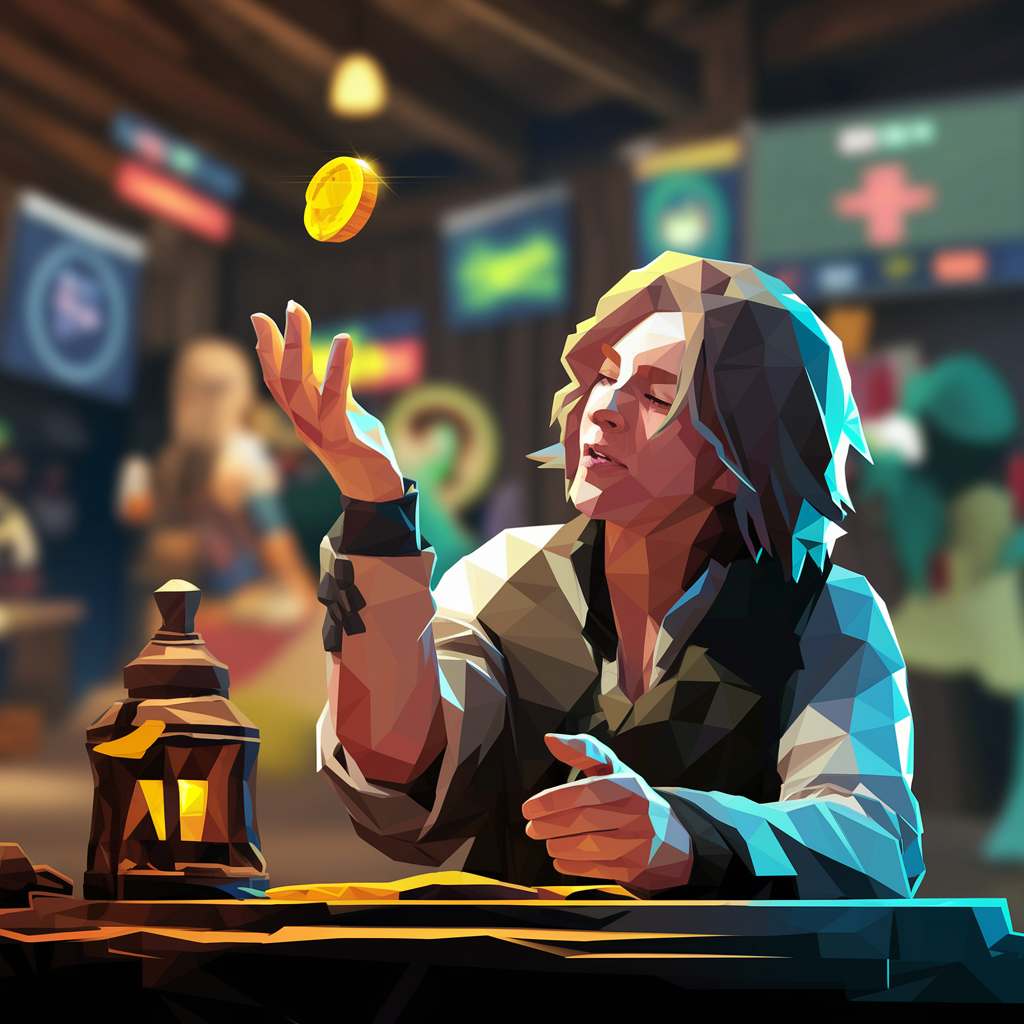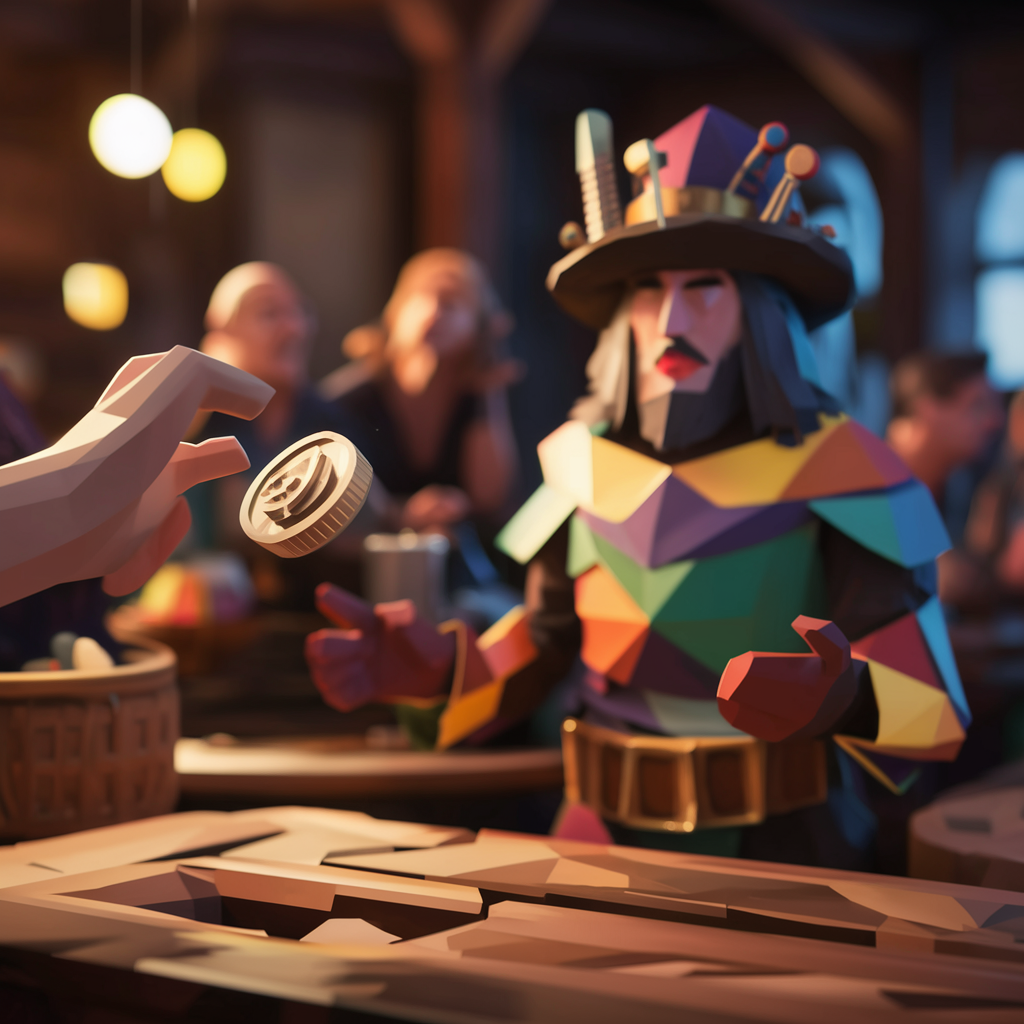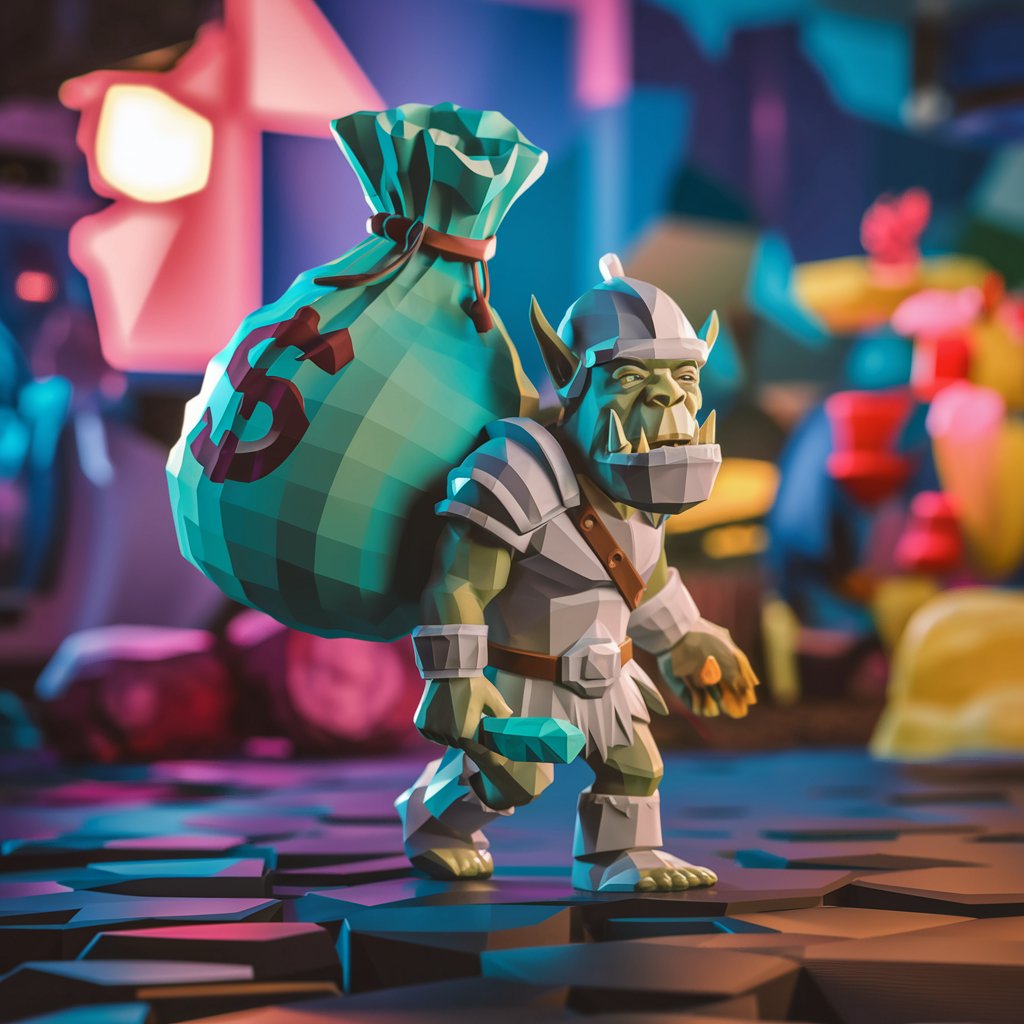Imagine logging into your favorite MMORPG and interacting with its thriving, player-driven market where rare materials from dangerous quests, difficult raids, and arduous ingredient grinding sell for premium prices. Or perhaps a strategy game where balancing resource production and military spending is what makes or breaks your run.
These are two examples of video game economy design at work – it’s the art and science of creating virtual economic systems that drive player engagement and balance.
Contrary to what many think, it goes far beyond simply adding coins or resources to a game. The goal is to create an interesting virtual world where everything is balanced, engaging, and sustainable over the long term. A well-designed game economy gives players meaningful choices, rewards strategic thinking, and creates a sense of progression that keeps them returning for more.
In this article, we’ll explain why good video game economy design matters and the key principles behind these amazing systems.
Why does good video game economy design matter?

Simply put, player retention. A well-crafted game economy is one of the most powerful tools for keeping players engaged over time. Maybe a player wants to save up for that shiny new mount, upgrade their base defenses, or improve their resource generation by buying better tools. As long as they have goals that feel achievable, these players will likely keep returning.
When done right, it gives players clear goals to work towards and multiple paths to achieve them. A good economy will provide many ways to earn currency and resources, allowing players to choose activities they enjoy most.
Also, don’t stress if there are slight differences in resources or currency per hour at similar investment levels – it’s usually just the ebb-and-flow of a player-driven market at play.
A strong and balanced economic design also encourages a vibrant player community. When players can trade items, cooperate on resource gathering, or compete in markets, it creates natural opportunities for interaction.
Guild systems in MMOs are a perfect example: players band together to tackle tough content, pool their resources, and share rewards. These social connections, built around the game’s economy, often keep invested long after they’ve mastered the core gameplay.
These two factors go hand in hand. The longer players stick around, the more likely they are to form lasting bonds within the game. This creates a positive feedback loop, where a thriving community attracts new players and keeps veteran ones coming back.
That’s why nailing video game economy design is critical for any multiplayer game aiming for long-term success.
6 key principles of robust video game economy design
Now that you know why designing a good game economy is important, let’s tackle the key principles behind them:
Game balance and fairness

A pillar of good video game economy design is achieving balance and fairness. This means creating a system where different playstyles are viable and rewarding.
For example, in an MMORPG, players focusing on PvE (Player vs. Environment) content should feel their time investment is as worthwhile as those who prefer PvP (Player vs. Player) activities. This is also valid for the many activities in either segment – for example, farming should not outstrip mining in terms of efficiency.
Balance also extends to item progression. New gear or upgrades should feel meaningful without completely outclassing older equipment. This helps prevent power creep, where new content trivializes previous achievements. A well-balanced economy ensures that veteran players still find value in established content while giving newcomers clear paths for advancement.
Fairness is equally crucial. While some games offer shortcuts through microtransactions, these shouldn’t create an insurmountable gap between paying and non-paying players. The goal is to create a level playing field where dedication and strategy are the primary drivers of player success.
Resource builders and spenders (or taps and sinks)
Every game economy needs ways for players to earn resources (taps) and ways to spend them (sinks).
Warframe provides an excellent example of this principle in action: players complete missions to earn various resources, which they then spend on crafting new weapons, characters (Warframes), and upgrades (mods). This creates a satisfying loop of earning and progression.
That said, it’s crucial to maintain a balance between taps and sinks. Too many ways to earn resources without enough ways to spend them can lead to inflation, where currency loses its value. Conversely, not enough ways can create frustrating scarcity. Some level of inflation or scarcity can add tension and excitement to an economy, but it needs careful management.
Many games also implement artificial sinks to maintain economic balance. In Action RPGs like Path of Exile, players can gamble their currency on item crafting and a plethora of other mechanics, creating an exciting risk-reward mechanism that also helps control the economic supply.
Hard and soft currencies

Most games employ multiple types of currency, typically categorized as “hard” and “soft” currencies.
Soft currency, like gold in World of Warcraft or credits in Warframe, is earned through regular gameplay and used for common purchases like gear and consumables. Hard currency, often premium or paid currency, is rarer and usually used for special items or bypassing time gates. Warframe’s platinum is a prime example of this.
The key is to strike a balance between these currencies. Players should feel they can progress and enjoy the game using soft currency alone, while hard currency offers convenience or cosmetic benefits without creating a pay-to-win scenario. Also, allowing conversion between currencies can add tons of depth to the economy.
Player interaction
A robust game economy should foster player interaction. This can take many forms:
- Trading systems allow players to exchange items or currency directly;
- Auction houses or marketplaces enable wider economic participation, though usually at a fee (tax);
- Guild systems encourage pooling resources for mutual benefit;
- Competitions or leaderboards can offer economic rewards for skilled play.
These interactions add a social dimension to the game, making the virtual world feel more alive and dynamic. They also create emergent gameplay as players find creative ways to collaborate or compete within the economic system.
Adaptability
Game economies must be flexible enough to adapt to changing player behaviors, market trends, and new content. Developers should monitor key economic indicators and be prepared to make timely adjustments. This might involve introducing new sinks if inflation becomes a problem, or creating new resource taps if certain items become too scarce.
Successful adaptability often involves close communication with the player base. Many games use test servers or beta periods to gauge the impact of economic changes before implementing them widely.
Monetization

While monetization is a necessary aspect of many games, it has to be implemented thoughtfully to avoid disrupting the game’s economy or player experience. Ethical monetization focuses on offering value to players without creating unfair advantages.
Common monetization strategies include:
- Cosmetic items that don’t affect gameplay;
- Convenience features like inventory expansions or faster travel;
- Early access to content that will eventually be available to all players;
- Battle passes or season passes that offer rewards for active play.
The key is to avoid “pay-to-win” scenarios where spending money becomes necessary to remain competitive, as such practices can quickly erode player engagement and trust in its developers.
Closing thoughts
Video game economy design is a critical component of successful game development. When well executed, it creates engaging, balanced, and sustainable virtual worlds that keep players invested.
From ensuring fairness to fostering player interactions, each element contributes to a thriving game economy. As the industry evolves with new technologies and business models, mastering these key principles remains essential for creating games with lasting appeal, no matter what happens to the gaming world.
At Main Leaf, we’re passionate about creating exceptional games – including, of course, crafting engaging game economies from scratch. As your full-service game development partner, we offer comprehensive solutions for all aspects of game creation. Whether you need help with something like economy design or full-scale development with cutting-edge technologies, our experienced team delivers high-quality results at competitive prices.
Contact us today and let’s start building something worth playing together!

